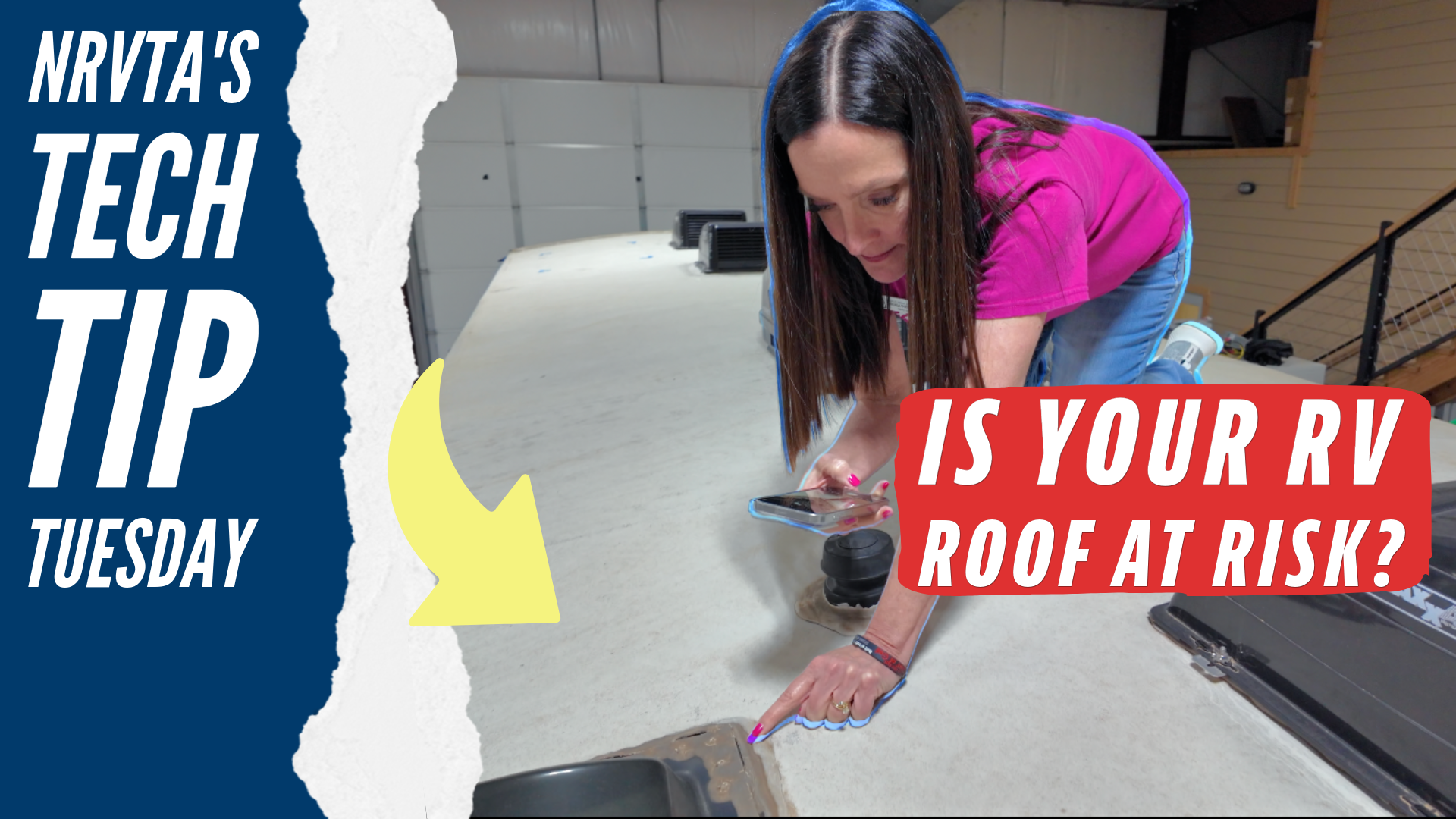Get your RV Technician Certification in as little as 5 weeks!

Welcome to another Tech Tip Tuesday, brought to you by the National RV Training Academy (NRVTA)—America’s largest hands-on RV training school. Today’s expert tip comes from Brenda, one of our Certified Inspector Course instructors, and she’s diving deep into one of the most overlooked, yet critical areas of your RV: the roof.
If you’ve ever wondered, “Can I inspect my RV roof myself?” or “Isn’t the dealer’s inspection enough?” — this blog is for you.
What’s Really Happening Up There?
RV roofs may look simple, but they’re complex systems with dozens of potential failure points. A professional inspection of the roof can include 30 to 50+ specific checks, and it’s far more involved than a quick walk-around or drone flyover.
Brenda and other certified inspectors don’t just glance at the surface—they get hands-on, crawling across the roof to inspect every seal, every screw, and every square inch of membrane.
Common Roof Issues You May Not See
Brenda shares some common problems she’s personally encountered on RV roofs:
- Roof Membrane Damage: Gouges, gashes, or scratches in the membrane, sometimes caused during manufacturing or installation.
- Trapped Debris: Fasteners, nuts, or other debris accidentally sealed under the membrane.
- Detached Trim Pieces: Trim meant to hold the membrane down can loosen or detach, creating large air pockets or “roof bubbles” that go unnoticed—until it’s too late.
- Poor Workmanship: Improper sealing around vents, skylights, satellite dishes, or fridge vents.
She explains, “I’ve seen RVs with membrane separation flapping in the wind down the highway—owners completely unaware. Once they stop, the membrane settles back down, hiding the damage.”
The Sealant: Your First and Last Defense
Perhaps the most important aspect of a roof inspection is the sealant.
Brenda doesn’t rely on drones or cameras to evaluate sealants—she gets on her hands and knees, physically touching the sealant to check:
- Pliability: Has it become dry, cracked, or brittle from UV exposure?
- Pinholes & Cracks: Even tiny imperfections can allow moisture to seep in.
- Sealant Integrity: Around every vent, appliance cutout, trim line, and edge of the roof.
She says it best:
“Anywhere a hole was made in the roof—plumbing vents, fans, fridge vents, trim—needs to be sealed. Even a pinhole can cause a slow water intrusion that leads to costly structural damage.”
Why This Matters (Especially If You’re Buying an RV)
If you’re purchasing an RV—especially from out of state—you may never see it in person before taking delivery. And even if you’re a current RV owner, roof damage can go unnoticed for months, leading to soft spots, mold, or major repairs.
That’s why NRVTA-trained inspectors go the extra mile—literally climbing on your roof to make sure everything is sealed, secure, and ready for travel.
DIY vs. Certified Inspections
Can you inspect the roof yourself? Technically, yes.
But will it be as thorough, informed, and experienced as a professional NRVIA Certified Inspector? Probably not.
You may miss:
- Tiny cracks invisible from standing height
- Signs of UV-damaged sealant
- Subtle dips or soft spots in the decking
- Improper trim attachment or membrane stretching
A good inspector has the training, tools, and attention to detail to catch what others might miss—and save you thousands in future repairs.
Final Thoughts: Don’t Skip the Roof
Brenda’s advice is clear: “The roof is the first line of defense between your RV and the elements. A compromised roof can lead to one of the most costly issues an RVer can face—water intrusion.”
And guess what? That’s just one system inspected during a professional RV evaluation. So if you’re buying, selling, or just trying to stay ahead of costly surprises, a certified inspection is one of the smartest investments you can make.
Get Registered Today!
Talk to a student advisor to learn more!